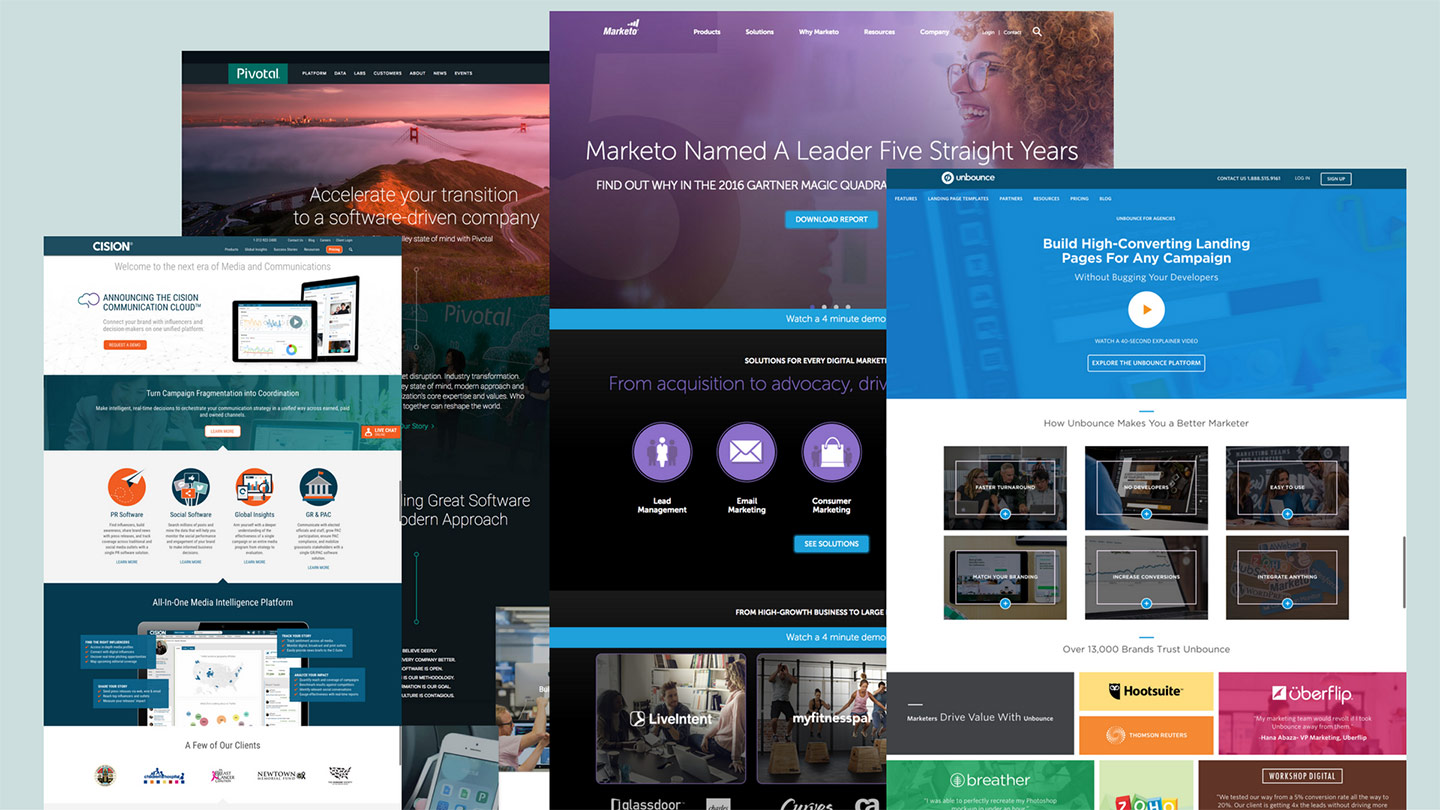Finding Patterns for Successful Marketing
Competitive, or comparative, research is an important step in building a marketing strategy that stands out. (Yes, even if you don’t think your competitors are doing anything particularly well.)
In the past, we’ve said to look outside of your industry for innovative ideas – but to lead your industry, you also have to look inside of it. The greater understanding you have of what your competitors are doing, the easier it is to stand out. (And beat them.)
It’s not about stealing their thinking or copying their ways. It’s all about finding patterns.
Over time, it’s common for everyone in a given industry to look and sound the same. That puts more unnecessary work on consumers. They are pushed into playing a guessing game to differentiate between options. It means your marketing strategy has to work even harder to divert attention away from your competitors.
It’s natural to take this route – copying someone else’s recipe for success makes sense on the surface level. But when everyone’s doing the same thing, it becomes harder and harder to gain customers or grow a following. Year after year, you’re spending all of your time treading water.
If you look around and notice that everyone else is treading water, it’s a good time to start swimming.
Seeing Design Patterns in the Industry
Let’s take a look at a few patterns in the growing software as a service (SaaS) industry. Slack to Basecamp. Salesforce to Dropbox. These days there’s a SaaS option for everything. And if you take a good look at their marketing (and websites, in particular) you can see that best practices and industry standards make for clear-cut patterns.

Website design in general often follows patterns and grids. For many SaaS websites, it’s common to start with a big photo, a headline and a call-to-action button. Then, add in a few more photos and icons. After that, follow up with a section of logos of notable customers. Voilà. A typical SaaS homepage.
Many of these sites (and brands) rely on a healthy amount of whitespace and a vivid, saturated color to add energy and life. Sure, sometimes there are two colors – for example, pairing a bright blue and orange is a common color scheme in the SaaS space.

Even if you go deeper than the homepage, the patterns continue. Take pricing pages, for instance. As a subscription-based model, pricing and fee structures are important to every SaaS company. But looking at the layouts of these pages, the boxes, the lists, the checkboxes – they all blend together. It’s another simple and identifiable pattern within the industry.
Websites like these hit on all of the necessary industry-standard elements, but nothing more. Which means almost all of these typical SaaS websites are interchangeable – and not all that valuable to customers.
Look for Patterns in Language, Too
When it comes to marketing language and product positioning, it’s a similar story. Headlines always advertise what the software can help you do: boost productivity, generate leads, or increase engagement, for example. As you scroll through the website, you’ll likely find a description of each feature, accompanied by an icon.
Generally, the language and positioning on SaaS websites focuses on utility – simply stating “this is what we do and here’s how it helps you.” And while that is necessary to any brand’s story, it doesn’t do much to separate one company from another. As the number of SaaS competitors grows, it’s going to take more than icons and a list of features to stand out. People want to know why your company does what it does – not just what and how.
If you take a step back, it becomes clear that these websites actually have a lot in common. In reality, you can edit a line of copy here, swap a logo there, and you’d never be able to tell one website from the next. That’s because they all follow a similar template, or pattern.
Breaking Free from Patterns
If you’re building a marketing strategy for a SaaS company, consider this a little bit of homework that’s already been completed (you’re welcome!). If you’re marketing a more traditional B2B or retail company, know that the principles behind comparative research hold true in every industry.
Take a look at the websites, logos or marketing collateral of your competitors and try to identify the patterns. Then, break free from what’s expected to set your brand and company apart from the competition.
And you don’t have to stop there. Go beyond the marketing to analyze other aspects of your industry, from product features to customer service. Finding the patterns there, and avoiding them, is an opportunity to rise above competitors.
Even though it’s tempting, take the time to identify the patterns in your industry and try to understand why they exist. Decide when it’s time to throw out conventions and go in a new direction. In doing so, you may find you have an opportunity to redefine your industry.


